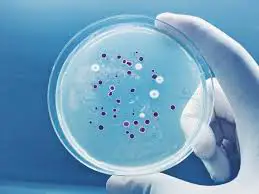Alzheimer’s disease remains one of the most pressing health challenges of our time. While treatments can help manage symptoms, they don’t stop the disease’s progression. Now, new research suggests that compounds found in everyday foods—like green tea and vitamin B₃—may restore energy to brain cells and support the brain’s natural clean‑up system, offering a potential pathway for prevention.
The Brain’s Energy Crisis
Aging brains face a measurable shortfall in cellular energy, and this shortage touches nearly every part of neuronal life. Neurons are among the most energy-hungry cells in the body, relying on two main “currencies,” ATP and GTP. ATP powers the ion pumps and channels that keep signals firing, while GTP drives proteins that move cargo, assemble microtubules, and finish waste removal. When ATP and GTP levels fall, the brain’s normal housekeeping functions slow down, leaving behind proteins and organelles that should have been recycled.
Mitochondria, the cell’s powerhouses, are central to this decline. With age they become fewer, more fragmented, and less efficient, leaking more reactive oxygen species and generating lower levels of both ATP and GTP. This energy gap alters key pathways that normally balance growth and repair, causing maintenance processes like autophagy to stall at multiple points. Autophagy requires fuel to tag damaged components, grow protective membranes, haul vesicles to lysosomes, and complete enzymatic breakdown. Without steady energy, partially digested material lingers and builds up over years, adding stress to neurons.
The consequences of this deficit show up first at the synapses, where most neuronal ATP is consumed. Restoring ion gradients after a signal, recycling vesicles, and keeping calcium in check are all energy‑intensive. When shortfalls occur, long‑term potentiation—the foundation of learning and memory—weakens, and signals become less precise. Axons, the long extensions of neurons, also depend on steady energy to transport mitochondria and waste vesicles with motor proteins. If transport slows, distant synapses lose support and become vulnerable.

Support cells like astrocytes and microglia also feel the squeeze. Astrocytes provide lactate to fuel active neurons, while microglia are responsible for clearing debris. With age, microglia shift toward a more inflammatory state and lose some of their clearing ability, adding to the overall energy imbalance. Meanwhile, glucose metabolism in the brain often drops, sometimes years before the onset of symptoms, signaling a chronic energy shortage. Regions like the hippocampus, which demand constant remodeling of connections for memory, are especially sensitive to these deficits. Their high energy needs make them the first to show lapses in clearing waste, weakening of synapses, and eventual structural decline.
What the Research Shows
Laboratory findings from GeroScience and related studies suggest that nicotinamide and EGCG do far more than temporarily lift cellular energy levels. In experimental models of aged neurons, these compounds corrected long‑standing deficits in guanosine triphosphate (GTP), enabling the molecular switches that drive intracellular transport to function properly again. With restored transport systems, neurons were able to move autophagic vesicles efficiently, merge them with lysosomes, and finish the waste‑clearing cycle that had previously stalled. This meant fewer toxic protein aggregates lingering inside cells and improved recycling of damaged organelles.
Another important observation was that the compounds improved mitochondrial activity, not just by supplying more raw energy but by reducing oxidative stress and stabilizing mitochondrial dynamics. When mitochondria are healthier, they generate energy more reliably and communicate better with other organelles, creating a ripple effect across cellular systems. Researchers also noted improvements in the structural integrity of synaptic terminals, which rely heavily on constant mitochondrial support. These changes indicate that energy restoration is linked to preserving the delicate machinery needed for memory and learning.
The studies additionally point to altered signaling pathways that respond to cellular energy states, such as AMPK and mTOR. By nudging these pathways back toward balance, nicotinamide and EGCG seemed to restore a cellular environment more favorable to repair and maintenance. While these results come primarily from laboratory settings, they provide insight into mechanisms that could explain why some populations with higher green tea consumption show better brain health outcomes. Together, the evidence underscores how targeting energy metabolism may open up new directions for non‑drug strategies against age‑related cognitive decline.
Green Tea Beyond the Lab
Outside of cell studies, population research gives a real‑world picture of how tea fits into everyday habits. Large cohorts in Asia and elsewhere generally report that regular green tea drinkers perform better on cognitive tests with aging and, in some cases, show fewer silent brain changes on imaging. These are patterns, not guarantees, and they tend to be modest—yet they are consistent with a lifestyle that replaces sugary or ultra‑processed beverages with unsweetened tea and pairs tea drinking with healthier dietary choices.
Form and preparation matter. Most of the catechins we care about (including EGCG) are present in brewed tea; matcha can deliver more because you consume the ground leaf. Decaffeinated green tea still contains meaningful catechin levels, which is useful if you are sensitive to caffeine or drink tea later in the day. Steeping in hot—but not boiling—water and sipping soon after brewing preserves more catechins. Adding a squeeze of citrus can help stabilize these compounds, while adding dairy may bind some polyphenols. Taking green tea between meals improves catechin absorption relative to drinking it with iron‑rich foods.
It’s also worth thinking about safety and fit. Most people do well with two to three cups per day, but higher intakes of concentrated extracts have been linked, rarely, to liver irritation; brewed tea is the safer default. If you take blood thinners or have iron‑deficiency anemia, discuss green tea timing with your clinician. People who are pregnant or sensitive to caffeine can choose smaller servings or decaf. Finally, tea should complement, not replace, the fundamentals that protect brain aging: a nutrient‑dense eating pattern, daily movement, quality sleep, and steady stress management.
Beyond Diet: Other Factors That Influence Brain Aging
Diet is one pillar of brain health, but researchers also point to less obvious influences that shape how the brain ages. Exposure to chronic stress hormones, for example, can worsen mitochondrial function and accelerate the accumulation of protein waste. This makes stress management more than a lifestyle preference—it is a biological safeguard for neurons. Social engagement also matters. Studies show that people who maintain strong relationships and regular mental stimulation often preserve brain volume and function longer than those who are isolated. Even environmental exposures, such as air pollution, are being studied for their capacity to harm neuronal energy metabolism over time.
Hormonal changes across the lifespan may add another layer. Declines in sex hormones like estrogen and testosterone can influence synaptic plasticity and energy use, which may help explain why the incidence of Alzheimer’s differs between men and women. Sleep cycles are equally important; disrupted circadian rhythms impair the nightly clearance of waste products through the brain’s glymphatic system. Each of these factors—stress, social health, environmental toxins, hormones, and sleep quality—intersects with energy biology, creating multiple entry points for prevention.

My Personal RX for a Smarter Brain
Research on green tea and vitamin B₃ is compelling, but how you integrate it into your daily life matters most. Here are my expanded, practical tips to support long‑term brain health:
- Sip green tea daily – Two to three cups can deliver meaningful amounts of EGCG. Choose brewed tea or matcha, and enjoy it plain to avoid excess sugar. If you are caffeine‑sensitive, opt for decaf but still reap catechin benefits.
- Add vitamin B₃‑rich foods – Incorporate mushrooms, salmon, peanuts, and fortified grains. Spread these foods across meals to help maintain steady energy production in your neurons.
- Rely on Mindful Meals – Structured, nutrient‑dense meal planning prevents gaps that weaken brain function. Think of Mindful Meals as a consistent way to balance antioxidants, proteins, and complex carbs without guesswork.
- Include MindBiotic – Brain health starts in the gut. Adding MindBiotic replenishes beneficial bacteria and reduces inflammation that can interfere with cognitive clarity. Pair this with fiber‑rich foods for maximum impact.
- Stay active – Aim for at least 150 minutes of movement per week. Exercise strengthens circulation and mitochondrial function, which directly feeds neuronal energy needs.
- Hydrate well – Even mild dehydration can impair concentration. Keep water nearby throughout the day rather than waiting until you feel thirsty.
- Prioritize restorative sleep – Your brain clears out metabolic waste at night. Create a dark, cool sleep environment and aim for 7–9 hours consistently.
- Cut back on processed foods – Packaged foods high in sugar or trans fats add inflammation and reduce metabolic efficiency. Replace them with whole foods that nourish both body and brain.
- Practice mindfulness – Stress hormones drain brain energy. Use breathing exercises, yoga, or short meditations to bring balance to your nervous system.
- Keep learning – Mental stimulation builds “cognitive reserve.” Read, learn a skill, or engage in puzzles to help your brain adapt and stay resilient as you age.
Sources:
- Brewer, G. J., Santana, R. A., et al. (2025). Treatment of age‑related GTP deficits restores autophagy in aged neurons. GeroScience. https://link.springer.com/article/10.1007/s11357-025-01786-4
- University of California. (2025, August 6). Researchers find combination of natural compounds for brain cleaning. https://www.universityofcalifornia.edu/news/researchers-find-combination-natural-compounds-brain-cleaning
- Food & Wine. (2025, September 6). Drinking green tea with this vitamin may help protect the brain from Alzheimer’s. https://www.foodandwine.com/green-tea-vitamin-b3-alzheimers-study-11801655
- Harvard T.H. Chan School of Public Health. (2024, March 7). Drinking green tea is a healthy habit. https://hsph.harvard.edu/news/green-tea-healthy-habit
- Time. (2024, April 17). Is green tea good for you? https://time.com/7017512/is-green-tea-good-for-you
- Nature npj Science of Food. (2025). Green tea consumption and cerebral white matter lesions in older adults without dementia. https://www.nature.com/articles/s41538-024-00364-w
- Cunnane, S. C., Trushina, E., Morland, C., Prigione, A., Casadesus, G., Andrews, Z. B., … & Mattson, M. P. (2020). Brain energy rescue: an emerging therapeutic concept for neurodegenerative disorders of ageing. Nature Reviews Drug Discovery, 19(9), 609–633. https://doi.org/10.1038/s41573-020-0072-x











 Subscribe to Ask Dr. Nandi YouTube Channel
Subscribe to Ask Dr. Nandi YouTube Channel










